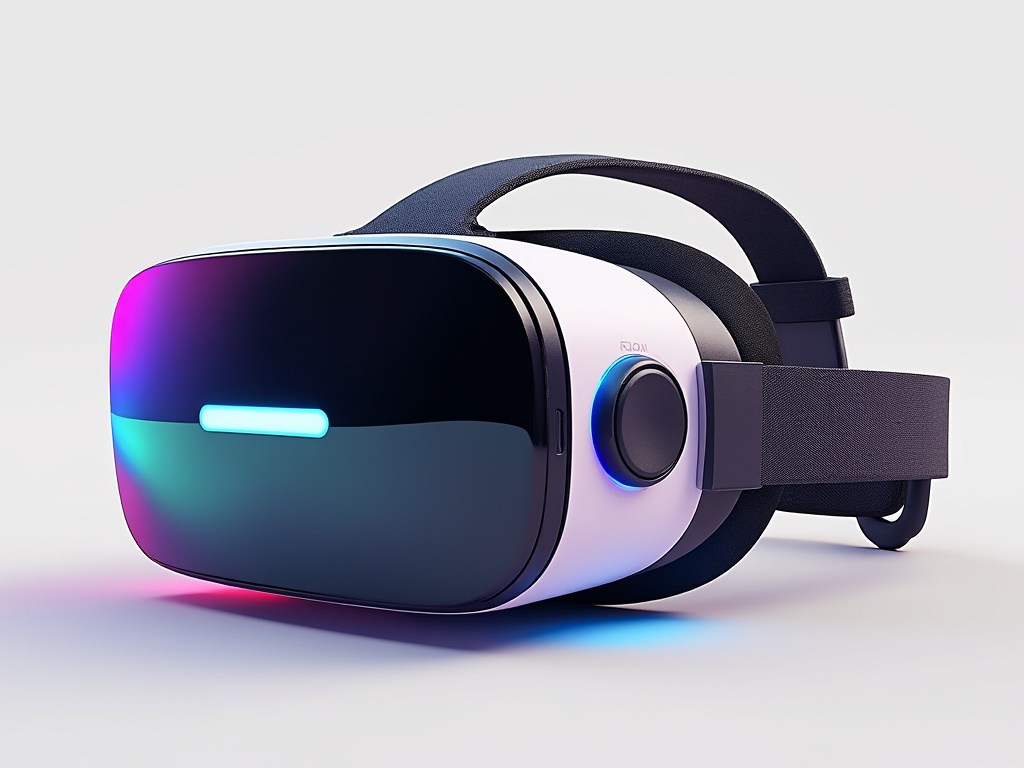- Published on
Virtual Reality 2.0 The Next Generation of Immersive Experiences
- Authors

- Name
- Adil ABBADI
Introduction
Virtual Reality (VR) has come a long way since its inception, transforming from a niche technology to a mainstream phenomenon. With the advent of Virtual Reality 2.0, we're on the cusp of a new era in immersive experiences. VR 2.0 promises to deliver unprecedented levels of realism, interactivity, and comfort, blurring the lines between the physical and virtual worlds. In this article, we'll delve into the exciting developments and innovations that are redefining the VR landscape.

- The Evolution of VR
- Advanced Tracking Systems
- Haptic Feedback and Controller Innovations
- Enterprise and Industrial Applications
- Conclusion
- The Future of Immersive Experiences
The Evolution of VR
The first generation of VR was marked by bulky headsets, limited content, and a focus on gaming. While it laid the foundation for the industry, it was clear that VR was still in its infancy. Fast-forward to today, and we're witnessing a seismic shift in VR technology. VR 2.0 is built upon significant advancements in areas like computing power, display resolution, and tracking systems.
Advancements in Display Technology
One of the most critical components of VR 2.0 is the display technology. Next-generation VR headsets boast higher resolutions, higher refresh rates, and improved pixel density. This results in a more realistic and immersive experience, with reduced motion blur and increased visual fidelity.

// Example code snippet demonstrating the increased pixel density in VR 2.0
const renderResolution = 1832 x 1920; // pixels
const refreshRate = 120Hz;
const pixelDensity = 22.5 pixels-per-degree;
Advanced Tracking Systems
Another crucial aspect of VR 2.0 is the tracking system. Improved tracking enables more precise and natural movements, allowing users to interact with virtual environments in a more realistic way. This is achieved through advanced sensors, machine learning algorithms, and increased processing power.
// Example code snippet demonstrating the improved tracking system
const trackingSystem = new SixDoFTracker();
trackingSystem.addSensor(new GyroscopeSensor());
trackingSystem.addSensor(new AccelerometerSensor());
// Process tracking data and update VR scene
function updateTrackingData(data) {
const userPosition = data.getPosition();
const userRotation = data.getRotation();
updateVRScene(userPosition, userRotation);
}
Haptic Feedback and Controller Innovations
Haptic feedback and controller innovations are also transforming the VR experience. Advanced haptic feedback systems simulate tactile sensations, further blurring the lines between reality and virtual reality. Next-generation controllers feature improved ergonomics, precision tracking, and advanced gesture recognition.

Enterprise and Industrial Applications
VR 2.0 is not just limited to gaming and entertainment. The technology has far-reaching implications for industries like education, healthcare, and manufacturing. Immersive training simulations, virtual product design, and remote collaboration are just a few examples of the many use cases for VR 2.0.
// Example code snippet demonstrating a virtual product design scenario
const designTool = new VirtualDesignStudio();
designTool.importCadModel('product_model.cad');
// Collaborate with team members in real-time
designTool.addCollaborator('JohnDoe');
designTool.addCollaborator('JaneDoe');
// Update design in real-time
function updateDesign(data) {
designTool.updateModel(data);
}
Conclusion
Virtual Reality 2.0 is poised to revolutionize the way we interact, work, and play. With significant advancements in display technology, tracking systems, haptic feedback, and controller innovations, the possibilities are endless. As VR 2.0 continues to evolve, we can expect to see even more sophisticated and immersive experiences that blur the lines between reality and virtual reality.
The Future of Immersive Experiences
As VR 2.0 continues to advance, it's essential to stay informed about the latest developments and innovations. Stay ahead of the curve and explore the vast potential of Virtual Reality 2.0. The future of immersive experiences is here – are you ready to dive in?
